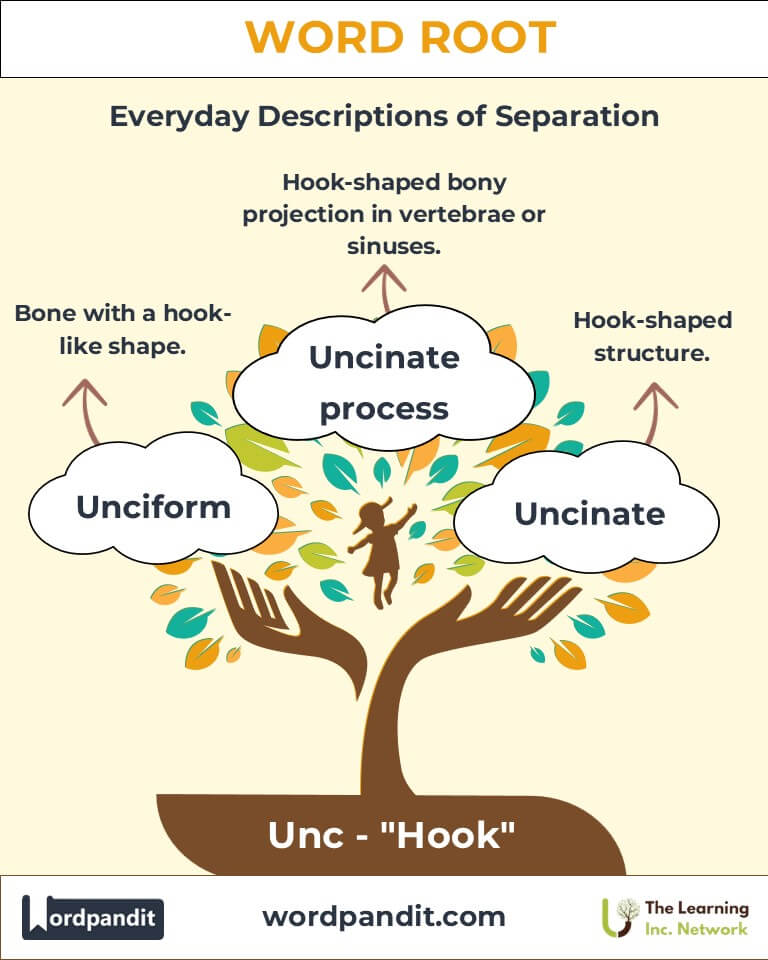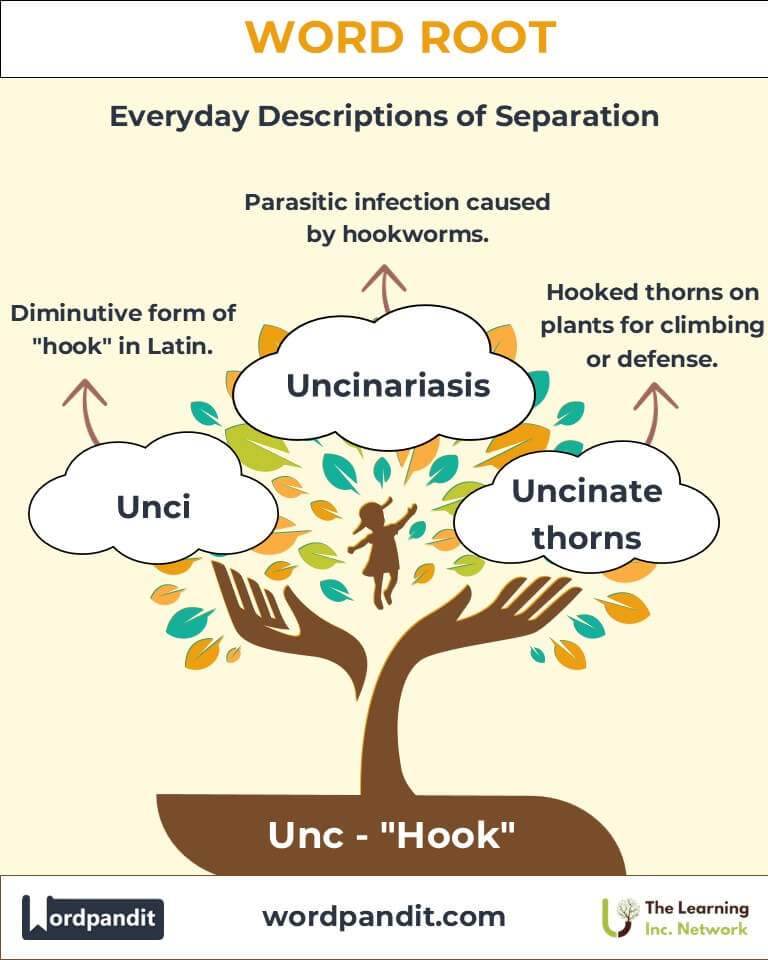Unc: The Hook Connecting Language and Meaning
Discover: The fascinating root "unc," meaning "hook," and how it forms the basis of specialized terms like "uncinate" and "unciform." This root has shaped words in anatomy, linguistics, and beyond, reflecting its versatility and enduring relevance.

Table of Contents
- Introduction: The Essence of "Unc"
- Etymology and Historical Journey
- Mnemonic: Unlocking the Power of "Unc"
- Common "Unc"-Related Terms
- "Unc" Through Time
- "Unc" in Specialized Fields
- Illustrative Story: "Unc" in Action
- Cultural Significance of "Unc"
- The "Unc" Family Tree
- FAQs about the "Unc" Word Root
- Test Your Knowledge: "Unc" Word Root Quiz
- Conclusion: The Living Legacy of "Unc"
1. Introduction: The Essence of "Unc"
When you hear "hook," what do you picture? Perhaps a fisherman’s tool or a curved piece of metal? The root "unc," pronounced "uhnk," captures this imagery and more. Derived from Latin, where uncus means "hook," this root has given rise to precise terms in anatomy and other fields. Words like "uncinate," describing hook-shaped structures, illustrate the enduring legacy of this unique root.

2. Etymology and Historical Journey
The word root "unc" comes from the Latin word uncus, meaning "hook" or "curved." Historically, it found its way into anatomical terminology during the Renaissance, a time when scholars sought to describe human and animal forms with greater precision. Over centuries, "unc" became a cornerstone in scientific language, particularly in describing structures resembling hooks.
3. Mnemonic: Unlocking the Power of "Unc"
To remember "unc," think of a pirate's hook hand or a curved vine snaring a trellis. These images highlight the essence of a "hook" and help reinforce the root’s meaning.
Mnemonic Device: "Unc is like a hook, curved to connect or grasp."
4. Common "Unc"-Related Terms
- Uncinate (uhn-sin-ayt): Hook-shaped.
Example: "The uncinate process of the pancreas aids in stabilizing the organ within the abdomen." - Unciform (uhn-sih-form): Having a hook-like shape.
Example: "The unciform bone, now called the hamate bone, is part of the wrist and features a hook-like projection."
5. "Unc" Through Time
- Classical Anatomy: During the Renaissance, "uncinate" emerged to describe specific anatomical structures resembling hooks.
- Modern Medicine: Words like "unciform" continue to appear in medical descriptions, especially in orthopedics and radiology.
6. "Unc" in Specialized Fields
- Anatomy:
- Uncinate process: A hook-shaped bony structure in the vertebrae and sinuses.
- Unciform bone: Part of the carpal bones in the wrist.
- Botany:
- Some plants exhibit "uncinate" features, such as hooked thorns for climbing or protection.
7. Illustrative Story: "Unc" in Action
Dr. Rivera, an anatomy professor, engaged her students by describing the "uncinate process" as nature’s way of hooking structures together for stability. She used a paperclip to demonstrate the concept, helping students visualize how the process anchors organs or bones. Her clever analogy earned her applause, proving the enduring utility of the "unc" root in teaching.
8. Cultural Significance of "Unc"
In ancient Rome, uncus was also a symbol of captivity, as hooks were used in gladiatorial arenas and punishments. This darker historical context contrasts with the root's modern, scientific usage.

9. The "Unc" Family Tree
- Anc (Greek): Meaning bend or curve.
Example: Ancillary (Referring to something that supports or curves around the main function). - Unci (Latin): A diminutive form of "hook."
Example: Uncinariasis (A parasitic infection caused by hookworms).

10. FAQs About " Unc "
Q: What does the root "Unc" mean?
A: The root "Unc" originates from the Latin word uncus, meaning "hook." It is often used metaphorically to describe something curved, hooked, or figuratively captivating.
Q: How is "Unc" used in anatomy?
A: In anatomy, "Unc" appears in terms like "uncinate process," a hooked projection in various parts of the body, such as the vertebrae or pancreas. It highlights structures that resemble a hook.
Q: What is the "uncial" script?
A: "Uncial" refers to a style of writing characterized by rounded, hook-like letters. It was commonly used in Greek and Latin manuscripts from the 3rd to 8th centuries.
Q: Can "Unc" have symbolic uses?
A: Yes, symbolically, "Unc" can represent something captivating or entrapping, much like a hook catching hold of something or someone.
11. Test Your Knowledge: " Unc " Mastery Quiz
1. What does the root "Unc" signify?
2. What is an uncinate process?
3. What does "uncial" refer to?
4. How is "Unc" used metaphorically?
5. What types of tools are described as "uncinate"?
12. Conclusion: The Living Legacy of "Unc"
From ancient Rome to modern anatomy, the root "unc" has shaped the way we describe curved and hook-like structures. Its applications span medicine, botany, and culture, proving its linguistic and practical versatility. As language evolves, "unc" continues to hook onto new ideas, connecting past knowledge to future discoveries.












